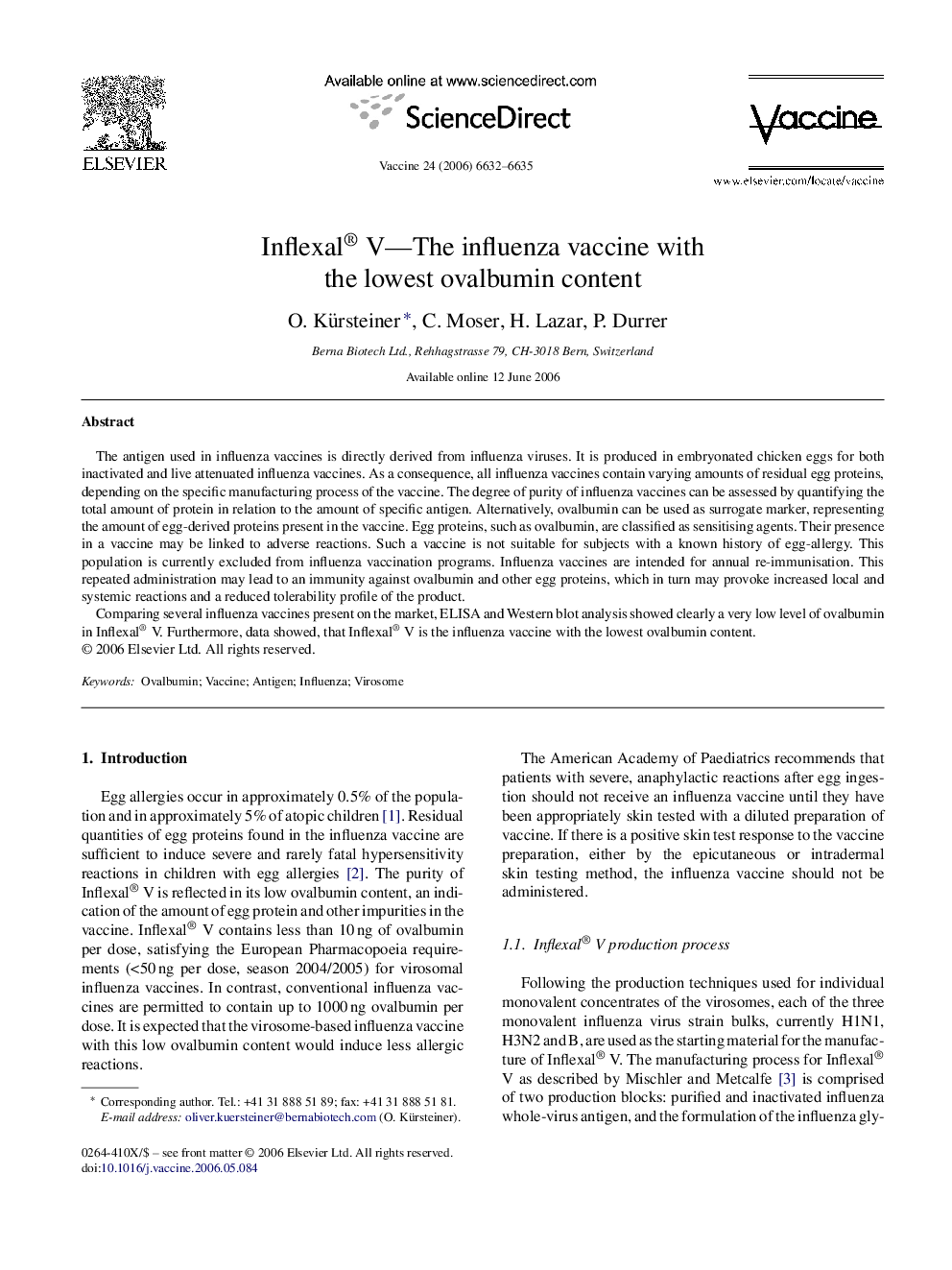| Article ID | Journal | Published Year | Pages | File Type |
|---|---|---|---|---|
| 2408658 | Vaccine | 2006 | 4 Pages |
The antigen used in influenza vaccines is directly derived from influenza viruses. It is produced in embryonated chicken eggs for both inactivated and live attenuated influenza vaccines. As a consequence, all influenza vaccines contain varying amounts of residual egg proteins, depending on the specific manufacturing process of the vaccine. The degree of purity of influenza vaccines can be assessed by quantifying the total amount of protein in relation to the amount of specific antigen. Alternatively, ovalbumin can be used as surrogate marker, representing the amount of egg-derived proteins present in the vaccine. Egg proteins, such as ovalbumin, are classified as sensitising agents. Their presence in a vaccine may be linked to adverse reactions. Such a vaccine is not suitable for subjects with a known history of egg-allergy. This population is currently excluded from influenza vaccination programs. Influenza vaccines are intended for annual re-immunisation. This repeated administration may lead to an immunity against ovalbumin and other egg proteins, which in turn may provoke increased local and systemic reactions and a reduced tolerability profile of the product.Comparing several influenza vaccines present on the market, ELISA and Western blot analysis showed clearly a very low level of ovalbumin in Inflexal® V. Furthermore, data showed, that Inflexal® V is the influenza vaccine with the lowest ovalbumin content.
